Using Behavioral Nudges in Healthcare Website Design
Transforming Patient Engagement with Behavioral Nudges in Digital Healthcare


Using Behavioral Nudges in Healthcare Website Design
Introduction to Behavioral Nudges in Healthcare Websites
In the evolving landscape of digital healthcare, behavioral nudges have emerged as powerful tools to influence patient decision-making subtlety and effectively. These design interventions leverage psychological principles to promote healthier choices without restricting options, making healthcare websites more engaging and outcomes-oriented. This article explores the core concepts of behavioral nudging, their scientific basis, successful implementations, and best practices to optimize healthcare delivery through innovative website design.
Foundations of Behavioral Nudges in Healthcare Websites
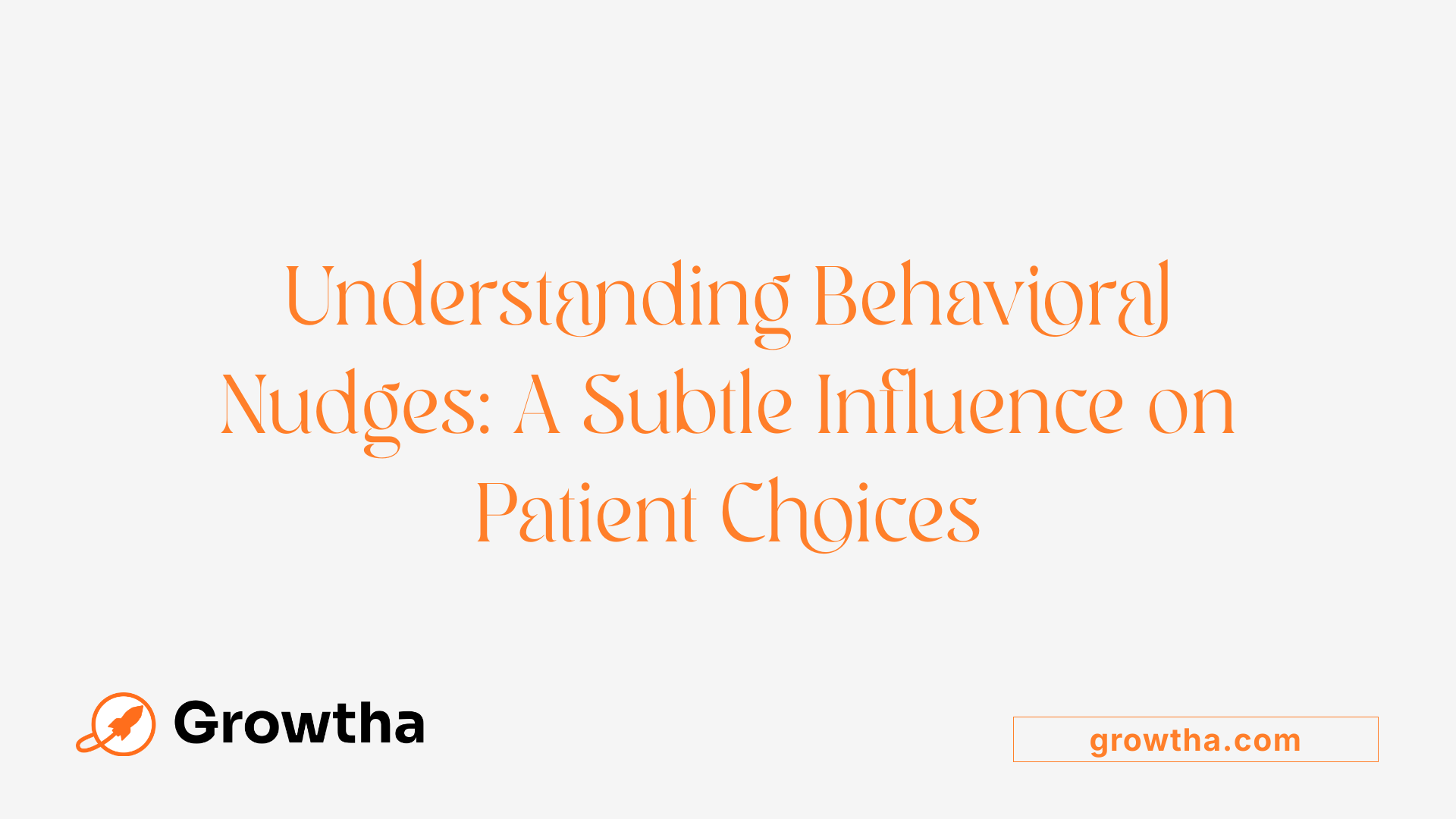
What is the concept of behavioral nudges in healthcare website design?
Behavioral nudges are subtle modifications made to how choices are presented on healthcare websites, aiming to influence patient decisions without limiting their options. These nudges use psychological insights to gently steer individuals toward healthier behaviors such as vaccination, medication adherence, or timely appointment attendance.
In practice, nudges often involve framing information in a way that highlights social norms or emphasizes personal and collective benefits. For example, a website might display messages like "Most patients like you have received their flu shot this season," to encourage vaccination.
Effective nudge design integrates seamlessly within existing clinical workflows, particularly through electronic health records (EHR). This integration helps avoid alert fatigue and ensures that prompts are timely and contextually appropriate.
Engaging stakeholders—including healthcare providers and patients—in the design process is vital. Their input helps develop nudges that resonate and address real-world barriers.
The process often involves rapid, iterative testing. Through user-centered design, developers refine messaging and presentation, ensuring impact and acceptability.
By leveraging these strategies, healthcare websites can subtly guide users toward decisions that improve health outcomes while preserving autonomy and choice.
Integrating Behavioral Science into Digital Healthcare Platforms
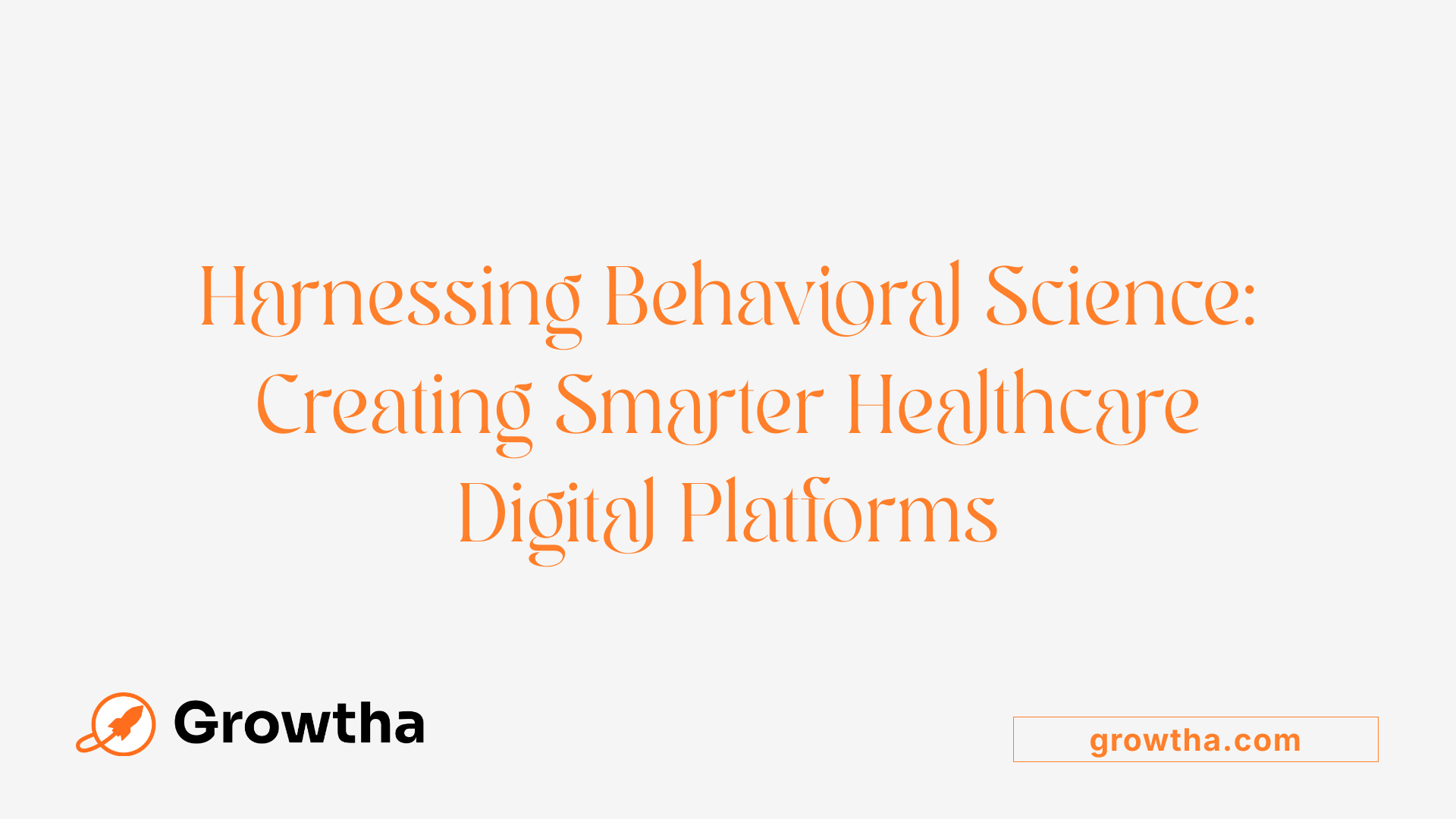 Understanding how people make decisions is crucial for designing effective healthcare websites and digital platforms. Behavioral sciences offer valuable insights into human cognitive biases, decision-making processes, and behavioral tendencies. Incorporating these insights helps in creating interfaces that subtly influence patient choices in a positive direction.
Understanding how people make decisions is crucial for designing effective healthcare websites and digital platforms. Behavioral sciences offer valuable insights into human cognitive biases, decision-making processes, and behavioral tendencies. Incorporating these insights helps in creating interfaces that subtly influence patient choices in a positive direction.
Design strategies informed by behavioral science focus on guiding patients toward healthier behaviors while respecting their autonomy. For example, implementing default options can significantly increase the likelihood of medication adherence or vaccination uptake. Goal setting features, personalized feedback, and social support tools can motivate patients by aligning digital interactions with their motivations and social contexts.
Assessment of real-world user behavior plays a vital role. Conducting cognitive bias audits and observing actual user interactions allow designers to identify decision-making patterns that may hinder optimal health choices. This evidence-based approach ensures that interventions target genuine behavioral tendencies rather than assumptions.
Features such as progress tracking, peer comparison, and contextual nudges can further enhance patient engagement. Applying behavioral economics principles—like loss aversion or framing effects—within website design makes health messages more compelling.
The integration of AI with behavioral insights dramatically advances this field. AI enables dynamic, personalized interventions tailored to individual patient behaviors and preferences. For instance, machine learning algorithms can customize messages based on a patient’s behavioral phenotype, crafting nudges that are more likely to resonate and result in sustained health improvements.
In conclusion, combining behavioral science with digital healthcare platform design creates user-centric, effective tools that empower patients to make better health decisions. This approach not only improves adherence and outcomes but also supports a more equitable and engaging healthcare experience.
Empirical Evidence Supporting Nudges in Healthcare Websites
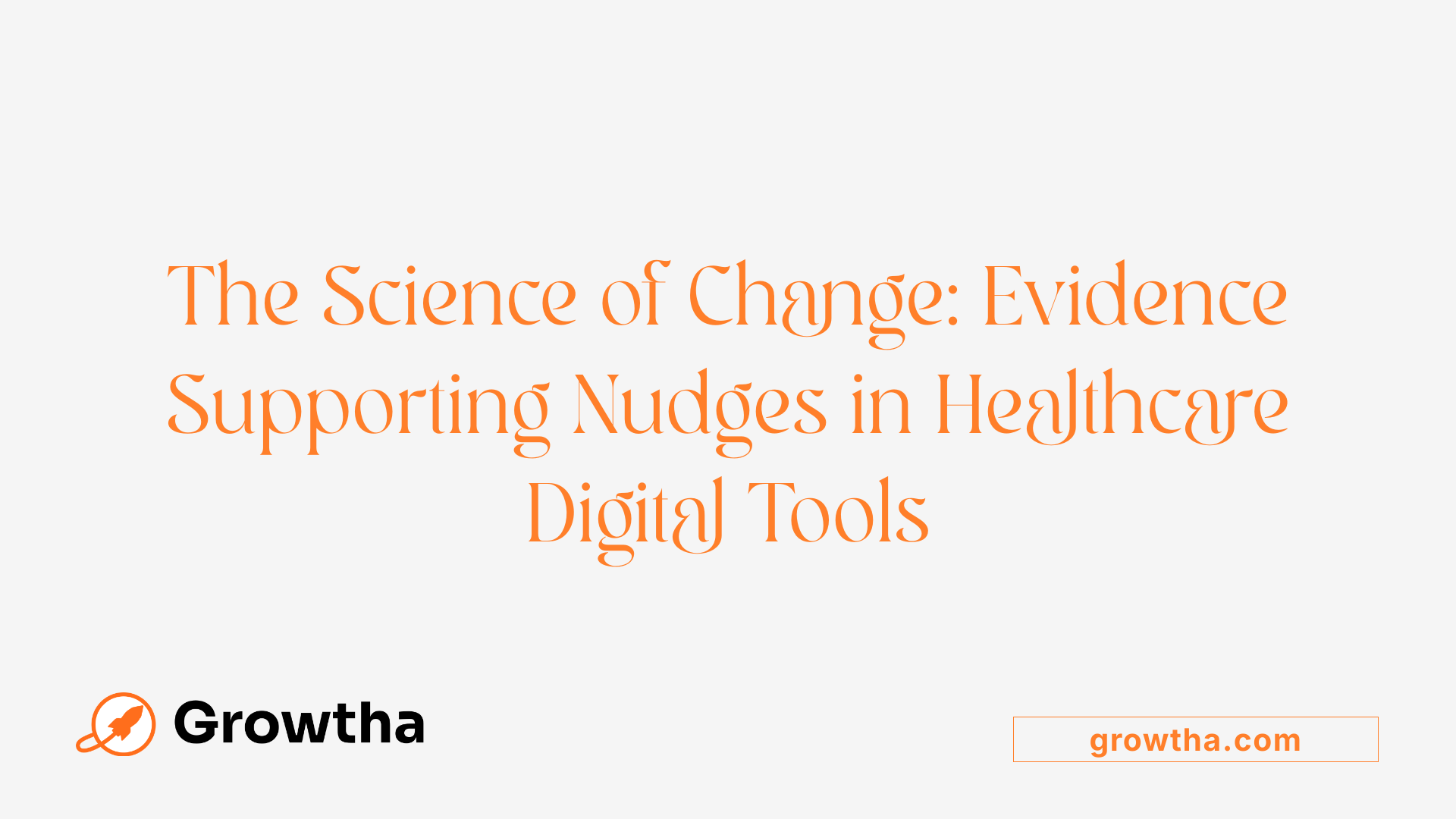 Numerous research studies have shown that behavioral nudges can effectively influence patient and provider behaviors through healthcare websites and digital platforms.
Numerous research studies have shown that behavioral nudges can effectively influence patient and provider behaviors through healthcare websites and digital platforms.
Systematic reviews of 66 studies reveal that around 78% of these interventions demonstrate measurable improvements. For example, nudges such as default options in electronic health records (EHRs)—which automatically suggest generic medications—or active choice prompts increase adherence to recommended guidelines.
Particularly impactful are nudges that focus on reminders, simplified messaging, and peer comparison feedback. These strategies have led to higher vaccination rates, improved prescribing behavior, and better compliance with clinical guidelines.
The Penn Medicine Nudge Unit has contributed significantly to this body of evidence, deploying nudges within care workflows that smoothly integrate into electronic systems. Their work shows that embedding default options or prompt alerts can lead to meaningful, sustained change in health provider actions.
Beyond individual provider actions, environmental and community-level nudges—such as public health signage or digital prompts—support broader health improvements. The combined data suggests that when designed thoughtfully, nudges embedded within healthcare websites and digital tools can scale effectively to improve health outcomes across populations.
Overall, the evidence underscores the potential of behavioral nudges to transform healthcare decision-making, making it easier for both patients and providers to choose healthier options.
Personalization and Context-Specific Nudging Techniques
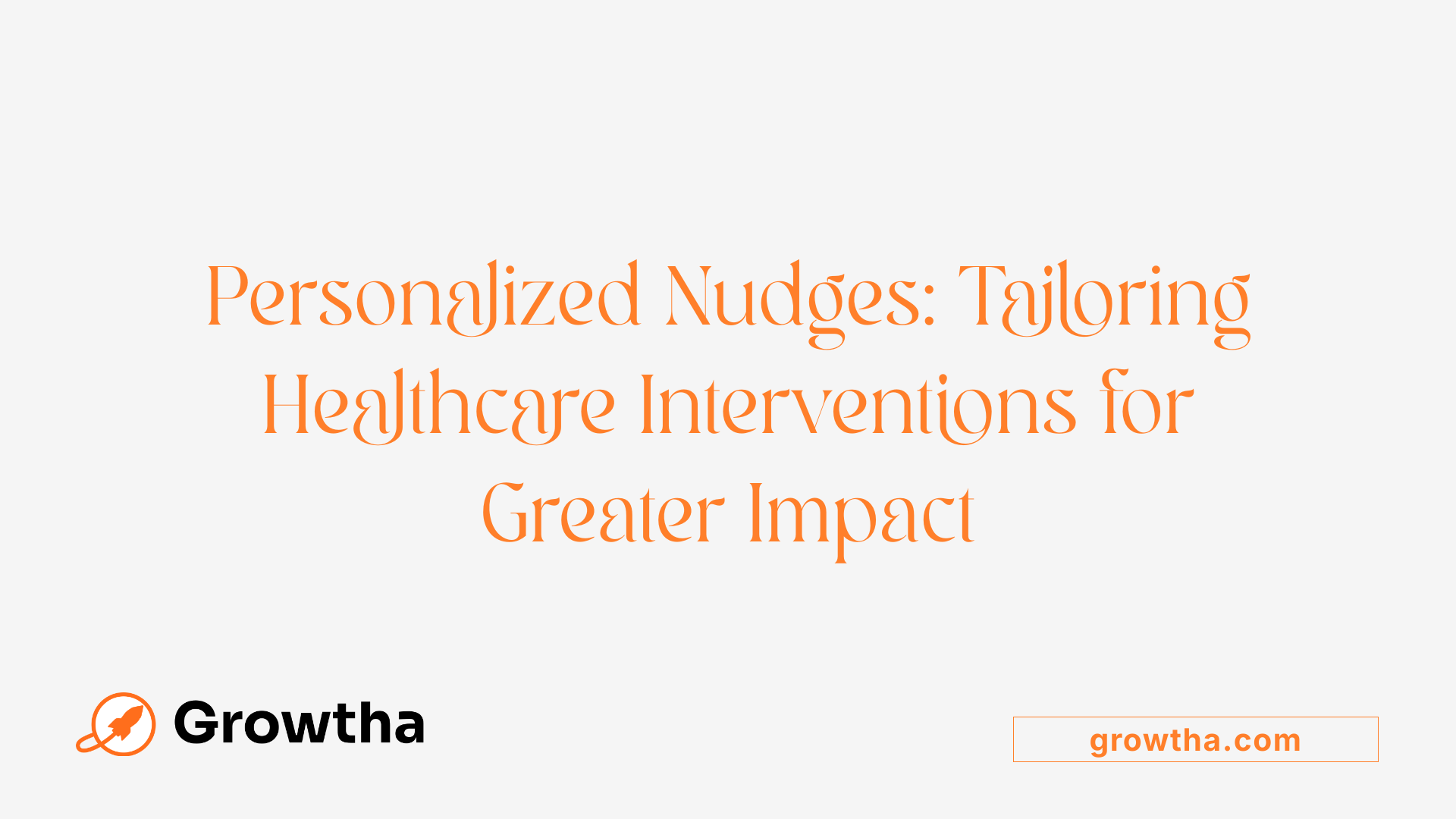 In healthcare, personalized and context-specific nudging techniques rely on sophisticated data collection methods to tailor interventions to individual patients. Wearable devices, remote patient monitoring, and digital health records gather detailed insights into behaviors, preferences, and health risks. This information feeds into AI and machine learning systems that analyze patterns and predict which nudges will have the greatest impact for each person.
In healthcare, personalized and context-specific nudging techniques rely on sophisticated data collection methods to tailor interventions to individual patients. Wearable devices, remote patient monitoring, and digital health records gather detailed insights into behaviors, preferences, and health risks. This information feeds into AI and machine learning systems that analyze patterns and predict which nudges will have the greatest impact for each person.
For instance, platforms like Wellth utilize behavioral economics principles, such as loss aversion and the endowment effect, combined with AI to create dynamic nudges that adapt based on patient responses. These may include reminders, motivational messages, or default settings aligned with the individual’s characteristics and needs. Similarly, AllazoHealth leverages large datasets to identify patients at risk of medication non-adherence and then personalizes prompts and support to improve compliance.
Another example is mental health chatbots like WoeBot, which use natural language processing to understand users’ emotional and cognitive states. They deliver targeted, conversational interventions that are tailored to the individual's mental health context, providing support that is both relevant and timely.
In digital health environments such as websites and apps, these techniques enable more effective engagement. Personalized nudges are designed to address specific barriers, leveraging the data-driven understanding of each patient. By matching interventions to individual traits and circumstances, healthcare providers can enhance the likelihood of positive behavior change.
Overall, the integration of AI, machine learning, and comprehensive data collection fosters highly customized health communication strategies. These approaches are transforming health behavior interventions from generic messages into precise, context-aware supports that significantly improve outcomes.
For further exploration, searching "Personalized behavioral nudges healthcare" yields extensive resources and case studies demonstrating these innovative approaches.
Implementing Nudges in Digital Healthcare Interfaces
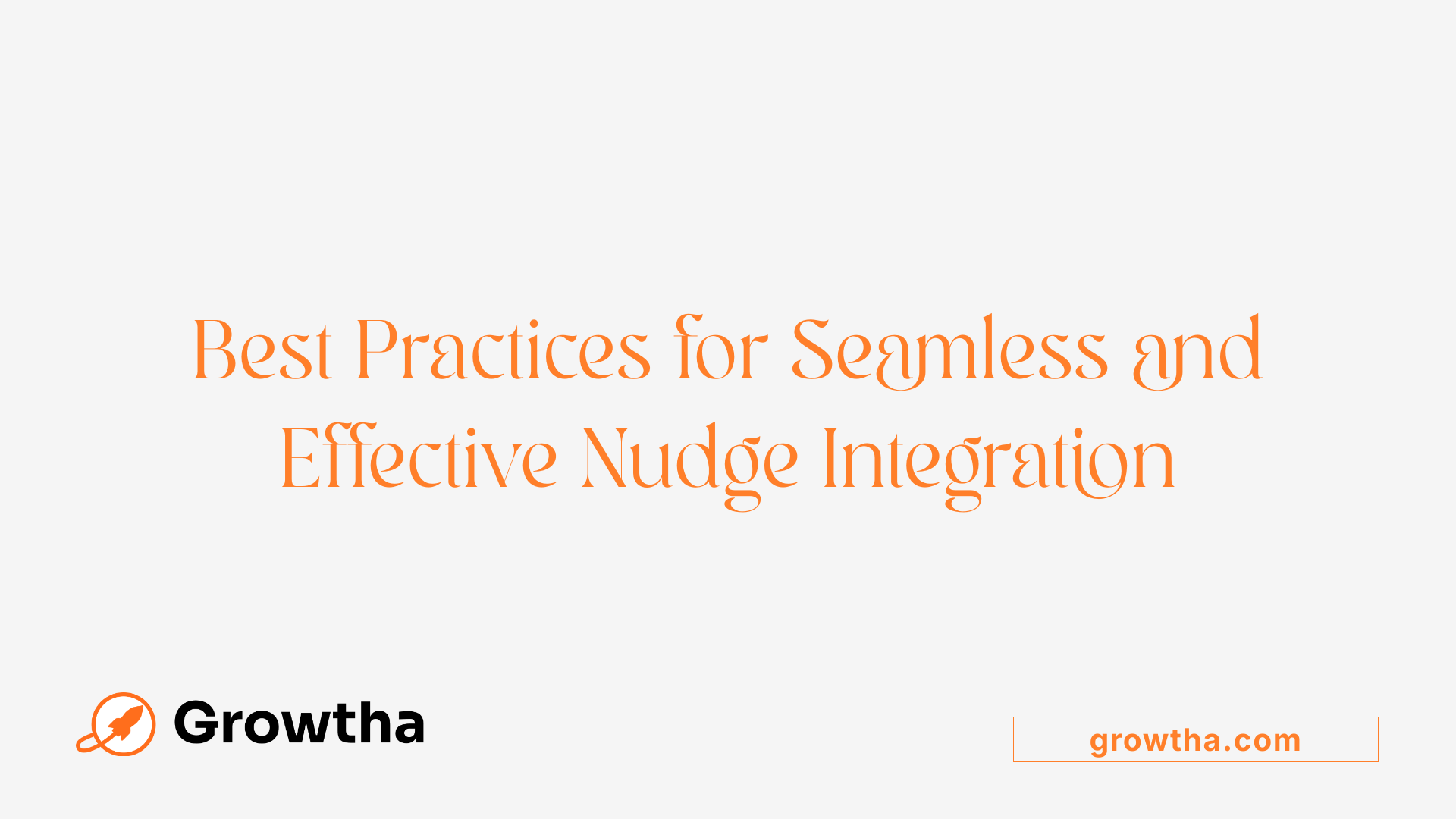
What are the best practices for implementing behavioral nudges on healthcare digital interfaces?
Implementing nudges effectively in healthcare digital platforms requires a structured and thoughtful approach. First, understand the specific behaviors you aim to influence—whether it's medication adherence, vaccination rates, or guideline compliance. Tailoring interventions to these behaviors increases relevance and effectiveness.
Seamless integration into existing clinical workflows is crucial. For example, embedding default options within electronic health records (EHRs), such as default prescriptions for generics, or setting up active choice prompts at decision points, can subtly steer clinicians towards preferred behaviors without disrupting their routine.
Stakeholder engagement plays a central role. Engaging clinicians, healthcare leaders, and support staff early in the design process ensures the nudges are accepted, appropriate, and ethically sound. Their feedback helps in customizing messages and choosing the right intervention points.
Using rapid experimentation methods, such as pilot tests and randomized controlled trials, allows teams to evaluate the effectiveness of different nudges. Continual monitoring and iterative testing help refine strategies, address unintended consequences, and improve health equity.
Furthermore, combining various nudge approaches—such as peer comparison feedback, framing information to emphasize benefits, and providing timely alerts—can reinforce behavior change and sustain improvements over time. Transparency about interventions and their intended outcomes fosters trust and enhances stakeholder buy-in.
Ultimately, successful implementation depends on aligning nudges with clinical realities, engaging users meaningfully, and maintaining a cycle of evaluation and adaptation to optimize health outcomes.
The Role of User-Centered Design and Rapid Testing
How does user-centered design aid in developing effective nudges and what are its benefits?
User-centered design (UCD) plays a critical role in creating impactful behavioral nudges within healthcare. By actively involving end-users—patients, clinicians, and other stakeholders—early in the development process, UCD ensures that interventions are tailored to real-world needs and preferences.
This approach involves conducting interviews, prototype reviews, and iterative testing cycles. For example, during a project aimed at reducing missed appointments, early feedback revealed that messages focusing on avoiding rescheduling burdens or emphasizing monetary costs were rejected by veterans. Recognizing such preferences early prevented the implementation of messages that could be counterproductive.
The main benefits of UCD include increased acceptability and ethical integrity of nudges, improved cultural relevance, and higher chances of behavioral change. When messages resonate with users’ values and contexts, they are more likely to influence decisions positively. Moreover, early detection of inappropriate or ineffective messages allows for rapid modifications, saving resources and increasing the efficiency of interventions.
Overall, incorporating UCD into nudge development enhances the likelihood of successful implementation and contributes to better health outcomes, patient satisfaction, and trust in healthcare systems.
AI-assisted Content Creation and Transparency in Healthcare Messaging
How does AI contribute to developing healthcare intervention content, and what are the advantages?
Artificial intelligence plays a transformative role in creating health communication materials, especially for interventions like medication adherence and behavioral nudges. Leveraging advanced models such as GPT-3.5, researchers can generate a large number of messages rapidly, ensuring consistency, scalability, and adherence to behavioral science principles.
The process begins with systematic prompt engineering, which involves crafting specific inputs to guide AI in producing messages that meet important standards for length, readability, and tone. This approach allows the production of content that fits within the constraints of SMS or other digital formats, while still being engaging and easy to understand.
One major advantage of using AI is the ability to scale content development efficiently. Instead of manually creating thousands of messages, AI can generate diverse options quickly, which can then be tested and refined through rapid experimentation. This not only accelerates the development process but also increases the likelihood of yielding impactful messages tailored to different patient populations.
To ensure safety and effectiveness, AI-generated messages undergo human oversight. Experts review and adapt the content to confirm it is accurate, ethically appropriate, and aligned with behavioral frameworks. This hybrid approach combines the efficiency of AI with the nuanced judgment of healthcare professionals.
Transparency and reproducibility are crucial in this context. The source code used for AI prompt engineering and the datasets of generated messages are made publicly accessible. This openness allows other researchers to reproduce results, verify methodologies, and build upon previous work, ultimately fostering trust and advancing evidence-based approaches in healthcare communication.
By integrating AI with transparent practices, healthcare providers can better tailor messaging to individual needs, improve patient engagement, and support positive health behaviors at scale.
Innovative Institutions and Their Impact on Behavioral Healthcare Design
What are notable examples of institutional efforts to apply behavioral nudges in healthcare?
One leading example is the Penn Medicine Nudge Unit, recognized as the world’s first behavioral design team embedded directly within a healthcare system. Established in 2016, this team has spearheaded over 100 projects that utilize behavioral science principles to influence medical decision-making, enhance public health efforts, and promote health equity.
The Penn Nudge Unit’s work involves multiple phases using systematic methods such as contextual inquiry, co-design with stakeholders, pragmatic implementation, and rigorous evaluation. Their goal is to develop scalable nudges that make the 'right' healthcare choices easier without restricting options.
Similarly, the behavioral design team at NYU Langone Health leverages cross-disciplinary insights from behavioral economics, implementation science, and human-centered design. Their focus is on making healthcare decisions simpler and more aligned with best practices. They incorporate advanced AI and machine learning technologies to personalize interventions and optimize outcomes.
Both institutions exemplify how integrating behavioral science into healthcare settings can produce scalable and ethical strategies that improve decision-making, patient adherence, and overall care quality. They demonstrate a commitment to designing interventions that are evidence-based, ethically sound, and tailored to diverse populations.
| Institution | Focus Area | Approach & Impact |
|---|---|---|
| Penn Medicine Nudge Unit | Medical decision-making, public health, health equity | Phased approach with scaling successful nudges in clinical practice |
| NYU Langone Behavioral Design Team | Healthcare provider practices, patient engagement, AI personalization | Human-centered design, AI-driven tailored interventions |
These efforts show the vital role innovative institutions play in advancing behavioral healthcare, offering insights that lead to more effective and equitable health outcomes.
Conclusion: Embracing Behavioral Science for Healthcare Innovation
The integration of behavioral nudges into healthcare website design represents a transformative approach to improving patient engagement, adherence, and health outcomes. Grounded in rigorous scientific research and advanced technological tools like AI, these interventions are most effective when designed with user-centered principles, stakeholder involvement, and continuous evaluation. Leading institutions like Penn Medicine and NYU Langone exemplify how embedding behavioral insights within healthcare systems can yield scalable, sustainable improvements. As digital health continues to evolve, harnessing behavioral sciences offers a promising horizon for ethical, personalized, and impactful healthcare delivery—Turning complex decision-making into simpler, guided choices that genuinely benefit patients and providers alike.
References
- Designing Nudges for Success in Health Care - AMA Journal of Ethics
- Applying user-centered design in the development of nudges for a ...
- Behavioral Nudging With Generative AI for Content Development in ...
- Nudge Unit | Center for Health Care Transformation and Innovation
- Behavioral Design Team | NYU Langone Health
- How Personalizing Nudges Could Change Health Care
- Nudging as a Support for Behavioral Change in Lifestyle Medicine
- Designing Nudges for Success in Health Care - AMA Journal of Ethics







